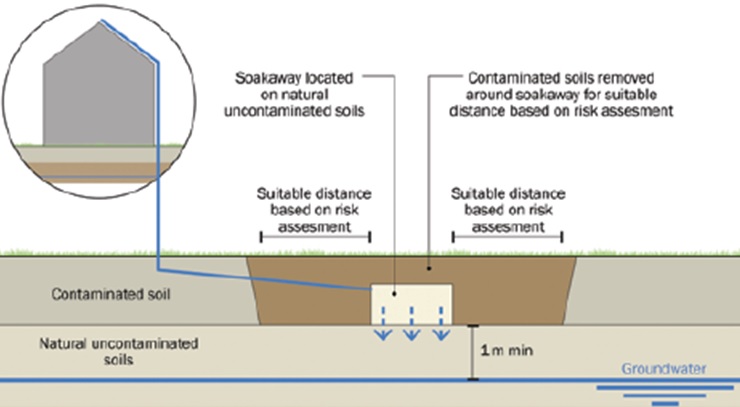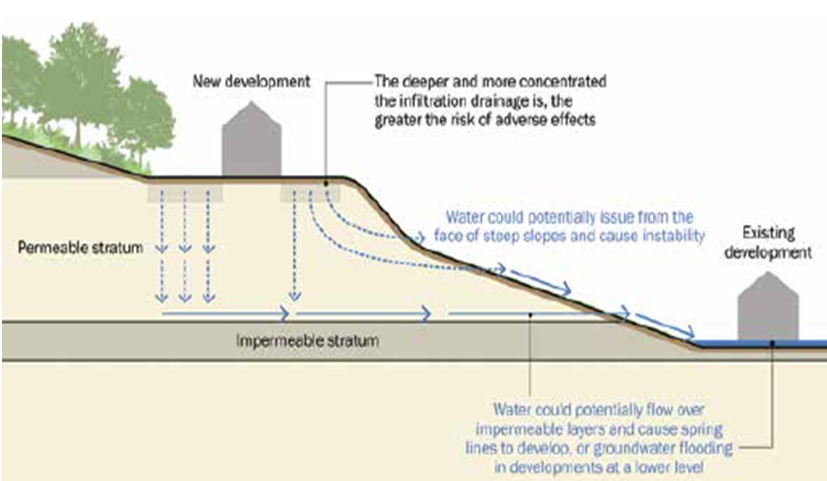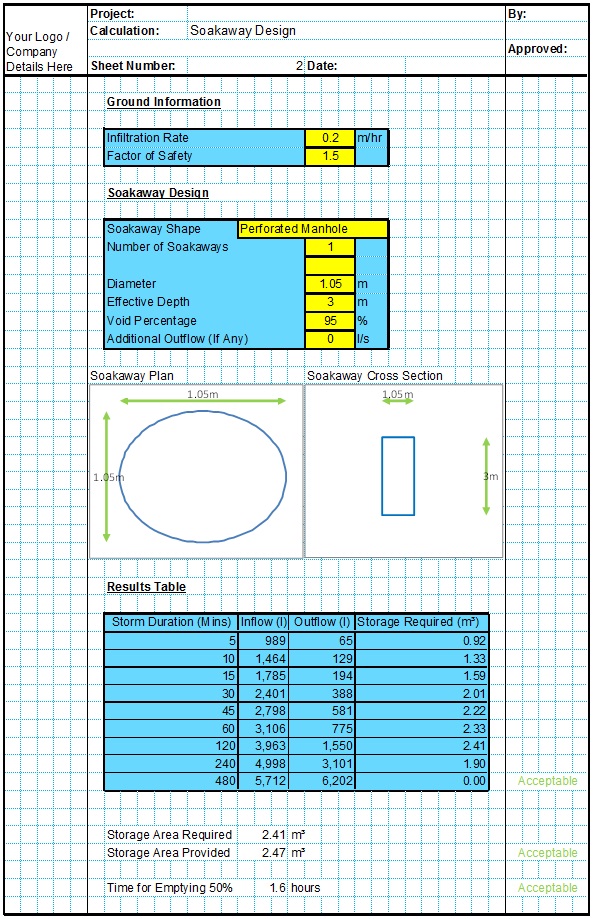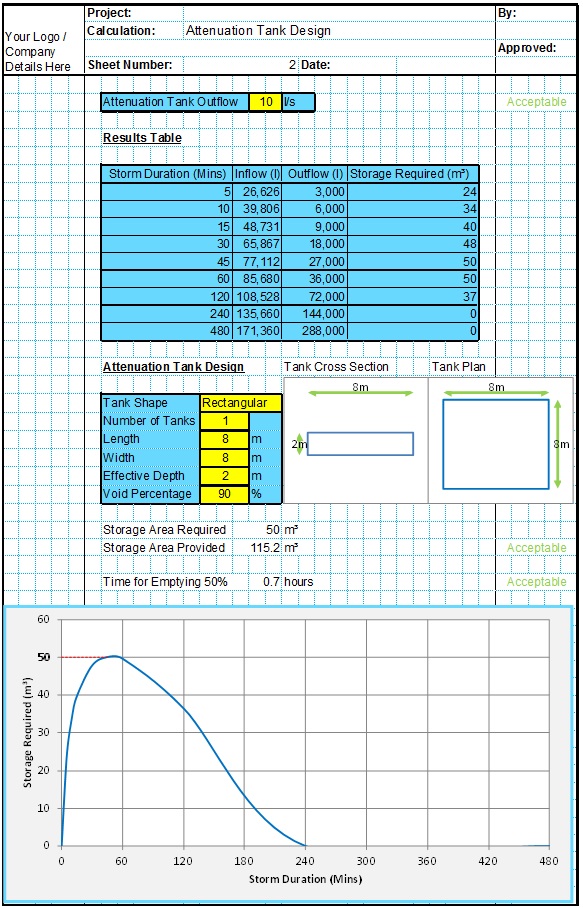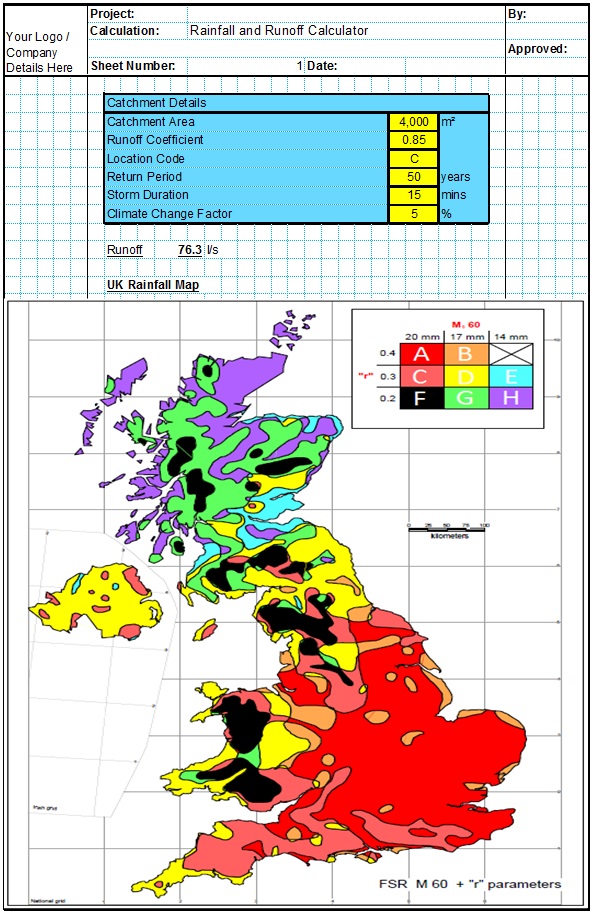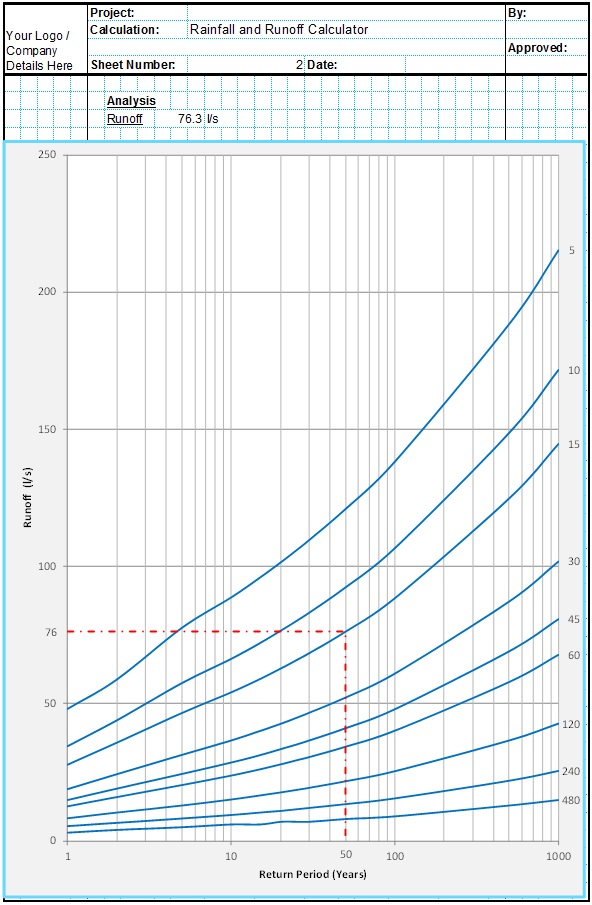There are a number of general ground conditions which can influence the suitability and effectiveness of soakaways. They can also dictate whether a conventional soakaway pit, trench soakaway or soakaway crates are most appropriate. Some of the most commonly occurring ground conditions are described in this section.
Contaminated Ground
Soakaways cannot generally be used on areas of contaminated ground where there is a risk of the soakaway causing or accelerating the leaching of contaminants in the ground to the groundwater or underlying soils.
For developments on or close to brownfield or contaminated land a full site investigation should be undertaken prior to detailed design of any proposed soakaways. The site investigation report should include an assessment of the contaminants present in the soils, their locations and depths, and an assessment of their leachability. It is also important that an assessment is done on the impact of the proposed soakaway on any existing contamination sealing or remediation strategies which are already in place.
Mitigation of Contamination Issues
Where contamination is present, the following issues can be investigated to allow the use of soakaways to be considered;
- The depth of contamination can be a consideration. If the contamination is limited to the surface layers a soakaway can be designed with protections to prevent the water from infiltrating into this layer. The following details are sometimes used;
- More permeable engineered soils can be installed to encourage the water to infiltrate downwards to the strata below the contaminated soils, rather than horizontally.
- Concrete barriers or impermeable geotextiles can be installed to a level below the contaminated soils to prevent water from the soakaway from infiltrating into the contaminated soils.
Sometimes it is possible to remove the contaminated soils from around the soakaway to prevent any leaching. The amount of material to be removed depends on the site and type of contamination, but a radius of around 2.0m is common. Engineered soils can then be used to increase the soakaways performance, and geotextiles can be used to prevent the infiltrating water from migrating into the contaminated soils. An example from the SUDS Manual is shown below.
If a soakaway is deemed feasible, the following issues should also be considered;
- Care should also be taken to ensure that no existing contaminated groundwater is able to enter the soakaway. This can be done by placing the soakaway at least 1.0m above the maximum groundwater level and through the use of impermeable geotextiles or barriers.
- Care should also be taken that any contaminated material excavated during the construction of the soakaway is disposed of in an appropriate manner.
- Other effects on contaminated ground should be considered, such as chemical attack on underground concrete or geotextile structures.
Soakaways near Slopes
When a soakaway is installed on top of a steep slope, there is the potential for water from the soakaway infiltrating through the soil to seep out of the slope. This can cause erosion, flooding and sometimes cause instability problems for the slope and should be avoided. The risks are increased for large or deep soakaways. Impermeable layers of clay or rock can lead to the above effects even on slopes some distance from the soakaway. These effects are illustrated in the diagram below, taken from the SUDS Manual.
When planning a soakaway near to a slope the following should also be considered;
- In some cases the stability of the slope depends on the water content of the soils. Large deep soakaways can add significant volumes of water to the soil, potentially weakening them. This can be an issue both above and below a steep slope.
- Some slopes can also be affected by solifuction, which is the slow creep of soils down a slope due to increased water content caused by water infiltrating from the soakaway. Where this is considered to be possible an assessment by a geotechnical engineer should be undertaken.
- When a soakaway is installed on top of an area of retained earth seepage can cause problems. The retaining wall may not have adequate weep holes or they may become blocked. This would cause an increased hydrostatic pressure on the wall and in some cases can cause the wall to collapse. An assessment by a suitable qualified engineer should be undertaken whenever a soakaway is planned near to a retaining wall.
Design Considerations
The magnitude of any negative effects is determined by the size and infiltration volume of the soakaway , the distance to the slope, the slope gradient and the local geology. In general the following rules can be used as a preliminary assessment;
- Slopes steeper than 25% can often experience negative effects and should be avoided wherever possible.
- Slopes less steep than 20% should always have a detailed assessment undertaken though they often do not experience any negative effects.
- Slopes steeper than 15% should usually be assessed for stability, particularly if any of the above conditions are considered possible.
- Slopes less steep than 15% can usually be accepted, except where any landslide or similar hazards have been identified.
Wherever possible the soakaway should be located at least 15m from any steep slope. Where any doubt exists a competent geotechnical engineer should be consulted.
Related Spreadsheets from CivilWeb;
Soakaway Design Spreadsheet
This spreadsheet calculates the requirements for a soakaway system and assists the user to design a suitable system.
Attenuation Design Spreadsheet
This spreadsheet calculates the requirements for a attenuation system and assists the user to design a suitable system.
Runoff Calculator Spreadsheet
This spreadsheet calculates the design runoff flow for a site in accordance with the a number of different methods including the Wallingford Procedure.
Full Drainage Design Suite
Full drainage design suite (50% Discount) including 7 spreadsheets;
- Colebrook White Pipe Design
- Manning Pipe Design
- Manning Open Channel Design
- Linear Drainage Design
- Runoff Calculator
- Attenuation Design
- Soakaway Design
